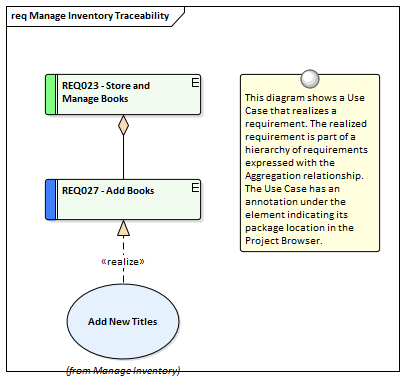| Prev | Next |
UML Requirements
The Unified Modeling Language does not specify an element for modeling Requirements other than the Use Case, which it states can be used to describe system usages. In very early versions of UML a Requirement was defined as a stereotyped comment, but this was later made obsolete. Enterprise Architect has, since very early versions, filled this gap in the UML specification by extending the language to include a Requirement element that allows this important concept to be modeled textually and graphically in diagrams and other views. Enterprise Architect has rich support for modeling Use Cases in compliance with the specification but allows the requirements analyst to specify other Requirements using the flexible Requirements element. When used together the Requirement element and the Use Case equip the analyst with a powerful palette to describe the Requirements for any system at any level. The Requirement element can be used to describe Business Drivers, Business Goals and Stakeholder Requirements, and these can be linked to Use Cases with the Realize connector. The Use Cases can be augmented with detailed Functional, Architectural and Implementation Requirements suitable for the implementation teams.


